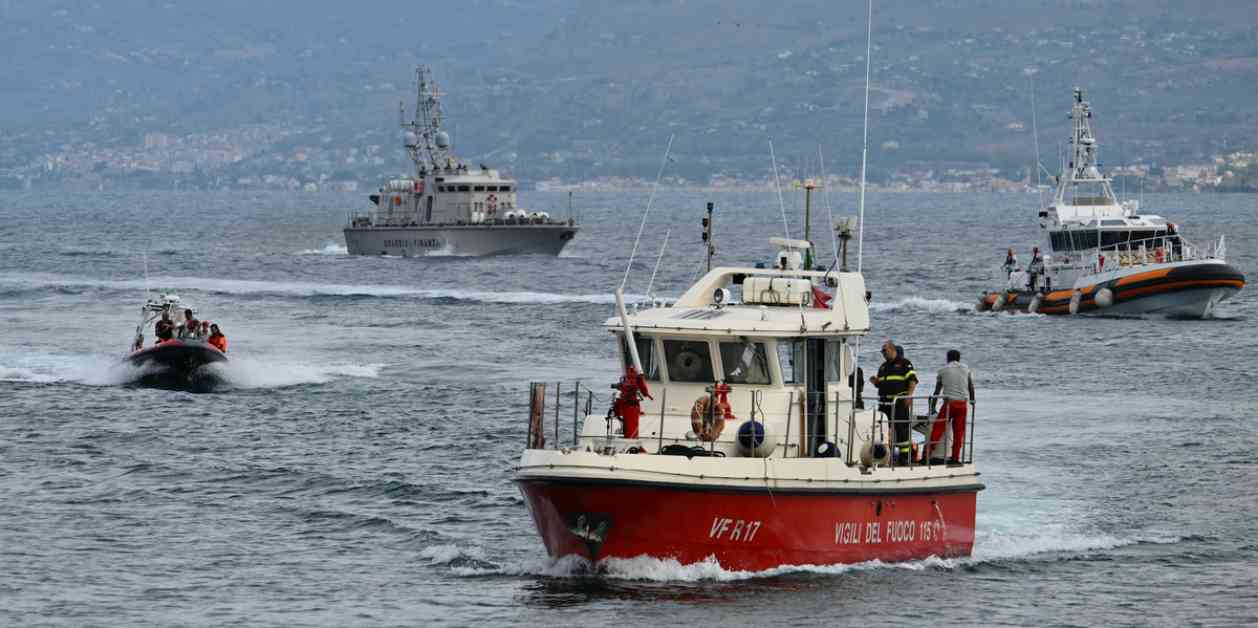Italian divers continue their search for survivors of the tragic sinking of tech tycoon Mike Lynch’s superyacht, the Bayesian, off the coast of Sicily. The sudden and devastating event has been attributed to a rare “black swan” weather occurrence, leaving five people dead and six still missing. As experts analyze the circumstances leading up to the disaster, questions arise about the crew’s preparedness and the role of advanced weather forecasting in preventing such tragedies in the future.
Uncovering the Black Swan Theory
The concept of a “black swan” event, coined by author Nassim Nicholas Taleb, refers to occurrences that are extremely rare, unpredictable, and have significant impacts. In the case of the Bayesian superyacht sinking, the sudden appearance of a tornado-like waterspout caught the passengers and crew off guard, leading to the rapid capsizing and sinking of the vessel.
Matthew Schanck, chairman of the Maritime Search and Rescue Council, explains the potential consequences of a waterspout dumping a load of water on board a vessel. The sheer weight of the water can cause significant damage and lead to catastrophic outcomes, as witnessed in the tragic incident involving the Bayesian.
The Role of Weather Conditions
Leading up to the disaster, meteorologists observed weather conditions conducive to the formation of a powerful waterspout off the coast of Italy. On the day of the sinking, there were 18 confirmed waterspouts in the region, indicating a high level of atmospheric instability and storm activity.
Dr. Pete Inness, a meteorology lecturer at the University of Reading, highlights the presence of a thunderstorm with heavy rain, lightning activity, and cold cloud tops as factors contributing to the formation of the waterspout. While officials can estimate the likelihood of tornadoes and waterspouts, detecting their strength and duration remains a challenge, especially when these events occur at night.
Luca Mercalli, a prominent Italian climatologist, emphasizes the importance of monitoring weather radar and alerts to anticipate and prepare for severe weather events. He suggests that crew members should have been vigilant and ready to respond to the approaching thunderstorm, potentially avoiding the tragic outcome of the superyacht sinking.
Preparedness and Response
Despite the availability of advanced weather forecasting tools, the crew of the Bayesian may not have been adequately prepared for the sudden onset of the waterspout. Schanck expresses skepticism about the crew’s ability to anticipate such a rare and high-impact weather event, noting that the forecasts did not indicate imminent danger before the disaster occurred.
Mercalli underscores the role of proactive decision-making in response to severe weather threats, urging crew members to prioritize safety measures and alert all occupants of potential risks. He emphasizes the need for continuous monitoring of weather radar to detect and mitigate the impact of intense thunderstorms within a short time frame.
As the investigation into the superyacht sinking unfolds, prosecutors are examining the circumstances leading up to the disaster and the actions taken by the crew in response to the weather conditions. The presence of a 240-foot-tall mast on the vessel has been ruled out as a contributing factor, as the yacht was found intact on its side at the ocean’s basin without signs of impact or structural damage.
In conclusion, the tragic sinking of the Bayesian superyacht serves as a stark reminder of the unpredictable nature of “black swan” events and the importance of proactive preparedness in the face of extreme weather conditions. As maritime experts and meteorologists analyze the factors leading to the disaster, lessons can be learned to enhance safety protocols and response strategies for future maritime incidents. The ongoing search for survivors and the investigation into the incident highlight the need for continuous vigilance and readiness in the maritime industry to prevent similar tragedies from occurring.













